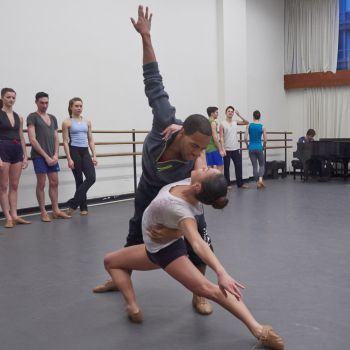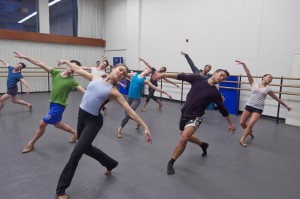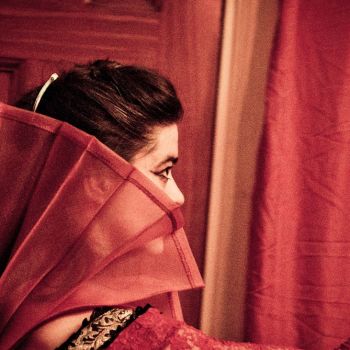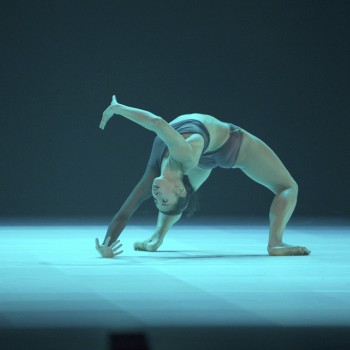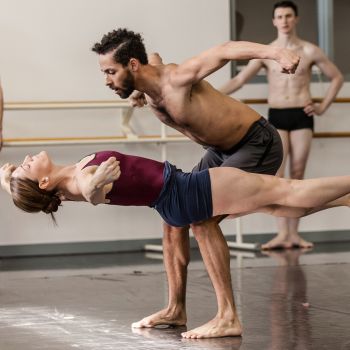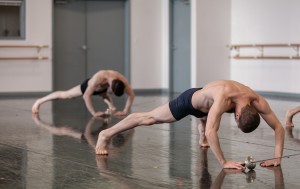One of Twyla Tharp’s breeziest, most feel-good works, Baker’s Dozen will be performed by Juilliard students next week. The piece, made in 1979 for 12 dancers, has an innocent polymorphous pleasure that predates the combative seductiveness of the more familiar Nine Sinatra Songs (1982). The piano music, by Willie “The Lion” Smith, will be played live by a Juilliard alum—one of the pluses of going to a dance concert at Juilliard. Another plus, of course, is that you get to see serious students who are already at a professional level. They regularly perform works by current choreographers, and this program is no exception. Accompanying Baker’s Dozen is Lar Lubovitch’s classic group work, Concerto Six Twenty-Two (the one that contains his beautiful male-bonding duet made in the time of AIDS) and Eliot Feld’s fun romp The Jig Is Up. March 21–25 in Juilliard’s Peter Jay Sharp Theater. For more info click here.
In NYCAll posts by Wendy
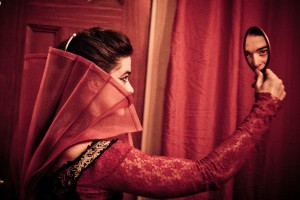
Rebekah Morin as Red Queen. Photo by Adam Jason
At the beginning of Then She Fell, an immersive performance in a Brooklyn church, a man playing “the doctor” reminds us of all the meanings of the word falling: Falling down the stairs, falling ill, falling in love. The audience of 15 is sitting in a tiny room in a Brooklyn church. This little speech, delivered by a young man so cluelessly serious he put me in mind of Professor Peabody of Rocky and Bullwinkle, helps us feel like we are entering pleasantly endangered territory. The mysterious wines and liqueurs we are offered also help.
The dancers playing Alice, the White Rabbit, and the Mad Hatter—even the Red Queen—are not as intense as the characters in Sleep No More, the more blockbuster example of the new immersive theater. There is no violent thrashing against ceilings or murder in a bathtub. But the smaller, quieter, Bessie Award-winning Then She Fell, has its own rewards. First of all, audience members get to be themselves, not masked. You are guided here and there like a patient in an elite hospital, and it gradually dawns on you that you are part of the performance. You are not one of the white masked masses that surge through Sleep No More, but you might be just a windowpane away from the Red Queen grabbing her bottle of pills. Or you might be invited to play poker with—was it the doctor?—after he tells of a dream where the streets keep changing.
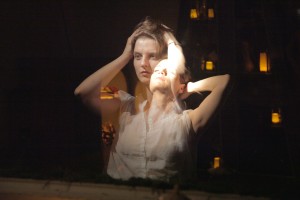
Then She Fell, with Marissa Nielsen-Pincus and Tara O’Con as the two Alices. Photo by Rick Ochoa
Secondly, there is a literary component that comes at you in fragments, and it’s left to you to connect the bits and pieces. With more than 20 rooms and audience members being led in different directions, you don’t encounter the same scenes as your fellow spectator. One scene that hooked me was where the two Alices almost merge in a two-way mirror, reminding me of the haunting, identity-confusion scene in Bergman’s film Persona. Another was the Mad Hatter giving dictation in a room littered with thousands of such failed attempts. He tries to dictate a letter, scampering nervously all over the room, never getting beyond the first few words. The letter seems to be about a break between Carroll and Alice. (We learn earlier that her mother put an end to his visits.) As the woman taking dictation tries to get it right, I am reading some of the myriad scrapped letters that have accumulated in piles—traces of many shows past.
The intriguing thing was hearing and seeing bits of writing by Lewis Carroll. You get a sense of the weirdness of Carroll’s obsession with Alice but also the vastness of his literary output.
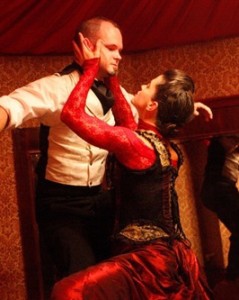
Tom Pearson as White Rabbit and Rebekah Morin as Red Queen. Photo by Rick Ochoa
While the story of Lewis Carroll and his young friend Alice is one cornerstone of Then She Fell, the site itself is another. The piece was first produced in a hospital (thus the doctor) but it moved to this site, The Kingsland Ward at St. Johns, last year. The building housed Occupy Wall Street a century after it was built. Tom Pearson, one of the three originators (the other two are Zach Morris and Jennine Willett) said to me after the show, “I love the architecture, the culture of what’s underfoot, the smells and touch. We call it all topography and it grows roots in all directions.”
I don’t understand the math, but with audiences of only 15, and a cast of about 8 doing two shows a night, somehow this production is holding its own financially. Happily, it is here to stay for months to come.
Featured Uncategorized Leave a commentI wouldn’t don 3-D glasses for just anyone, but I would for Wayne McGregor. His London-based Random Dance company gives Atomos its American premiere at Peak Performances in NJ. The piece plunges his fierce performers into a visually transforming environment, including 3-D video screens hung from above (I’m trying to picture it), designed by his resident lighting genius, Lucy Carter. I loved Borderlands, their collaboration for San Francisco Ballet, which gave me a reason to interview the brilliant McGregor for Dance Magazine last year. If Atomos has even a fraction of the giddy complexity of Borderlands, I’ll be beyond happy. March 15–23 at Peak Performances in Montclair, NJ—only a half hour from Penn Station. To find out how to get there, click here.
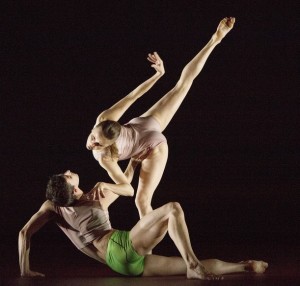
Atomos, photo by Ravi Deepres
Let’s hope there are no more fires in the Harris Theater, as there was before Hamburg Ballet’s date there last month. Chicago’s underground theatre had to cancel performances, sending the 100-person German company packing when an electrical fire broke out. Thankfully, the Harris Theater is under control now—just in time for Hubbard Street’s tribute to Jirí Kylián, that master innovator in Europe. The company performs a gender-balanced program: the all-male Sarabande (1990), the all-women Falling Angels (1989), 27’52” (2002), and—everybody’s favorite sexual fantasy—Petite Mort (1991). Music scores include Bach, Reich, and Mozart. March 13–16. For tix, click here.
UncategorizedIf you’re interested in how other forms of dance infiltrate ballet—and you live near Seattle—check out Peter Boal’s Director’s Choice evening at Pacific Northwest Ballet. He’s got company favorites by (post)moderns Susan Marshall (Kiss) and Molissa Fenley (State of Darkness), and TAKE FIVE…More or Less by musical theater mastermind Susan Stroman. What’s new? A world premiere by Alejandro Cerrudo, everyone’s favorite tall, skinny Spaniard, who can flip between classical ballet (silky pirouettes) and modern (large scooping moves), as he did for Wendy Whelan’s Restless Creature. March 14–23. Click here for tix.
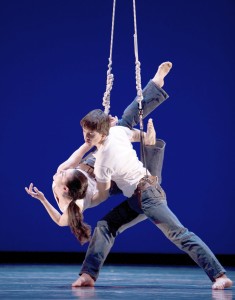
James Moore & Mara Vinson in Marshall’s Kiss. Homepage photo is of Stroman’s TAKE FIVE, with Kaori Nakamura; both photos © Angela Sterling.
